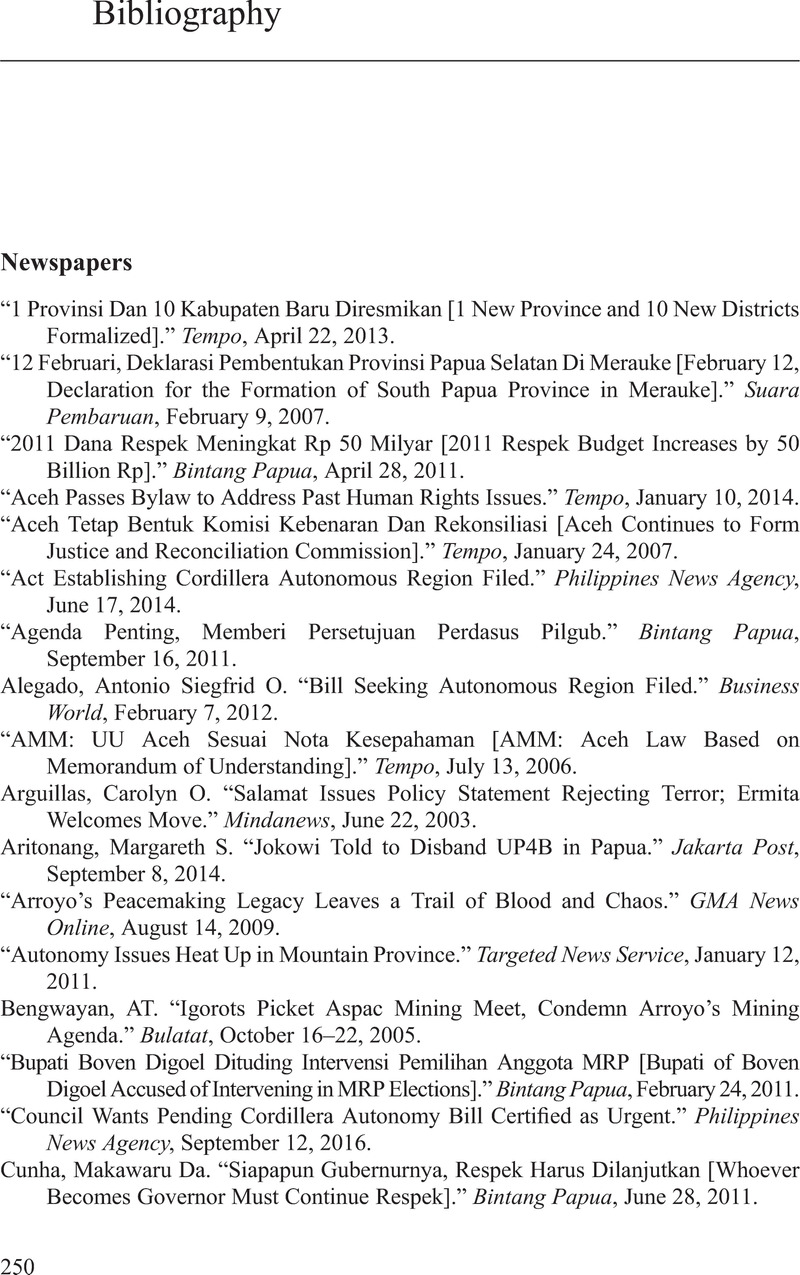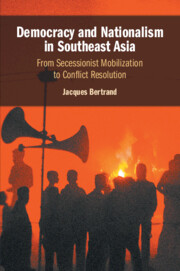Book contents
- Democracy and Nationalism in Southeast Asia
- Democracy and Nationalism in Southeast Asia
- Copyright page
- Dedication
- Contents
- Figures and Tables
- Preface and Acknowledgements
- Abbreviations
- 1 Introduction
- 2 Nationalist Conflict in Democratic Contexts
- 3 Aceh
- 4 Papua
- 5 Moros of Mindanao
- 6 “Exit and Reframe”
- 7 Malay Muslims in Thailand
- 8 Conclusion
- Glossary
- Bibliography
- Index
- References
Bibliography
Published online by Cambridge University Press: 04 May 2021
- Democracy and Nationalism in Southeast Asia
- Democracy and Nationalism in Southeast Asia
- Copyright page
- Dedication
- Contents
- Figures and Tables
- Preface and Acknowledgements
- Abbreviations
- 1 Introduction
- 2 Nationalist Conflict in Democratic Contexts
- 3 Aceh
- 4 Papua
- 5 Moros of Mindanao
- 6 “Exit and Reframe”
- 7 Malay Muslims in Thailand
- 8 Conclusion
- Glossary
- Bibliography
- Index
- References
Summary

- Type
- Chapter
- Information
- Democracy and Nationalism in Southeast AsiaFrom Secessionist Mobilization to Conflict Resolution, pp. 250 - 274Publisher: Cambridge University PressPrint publication year: 2021



